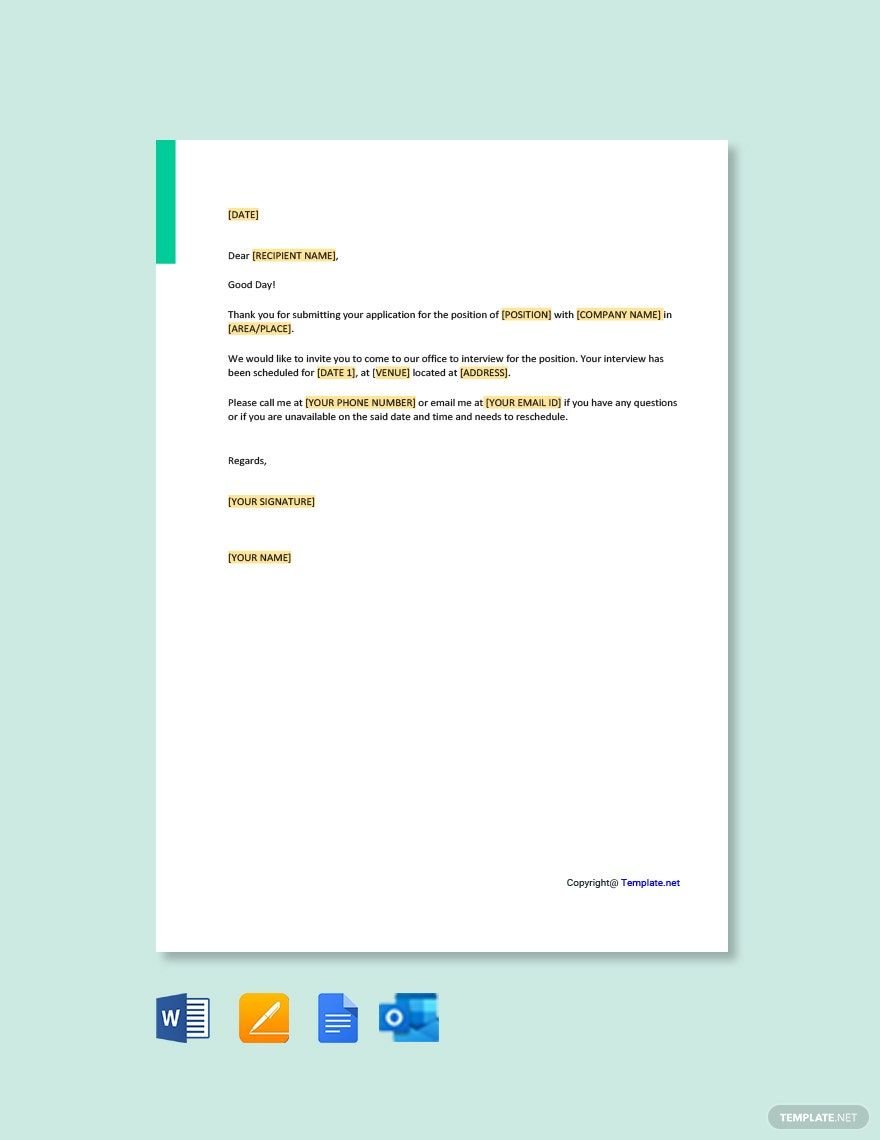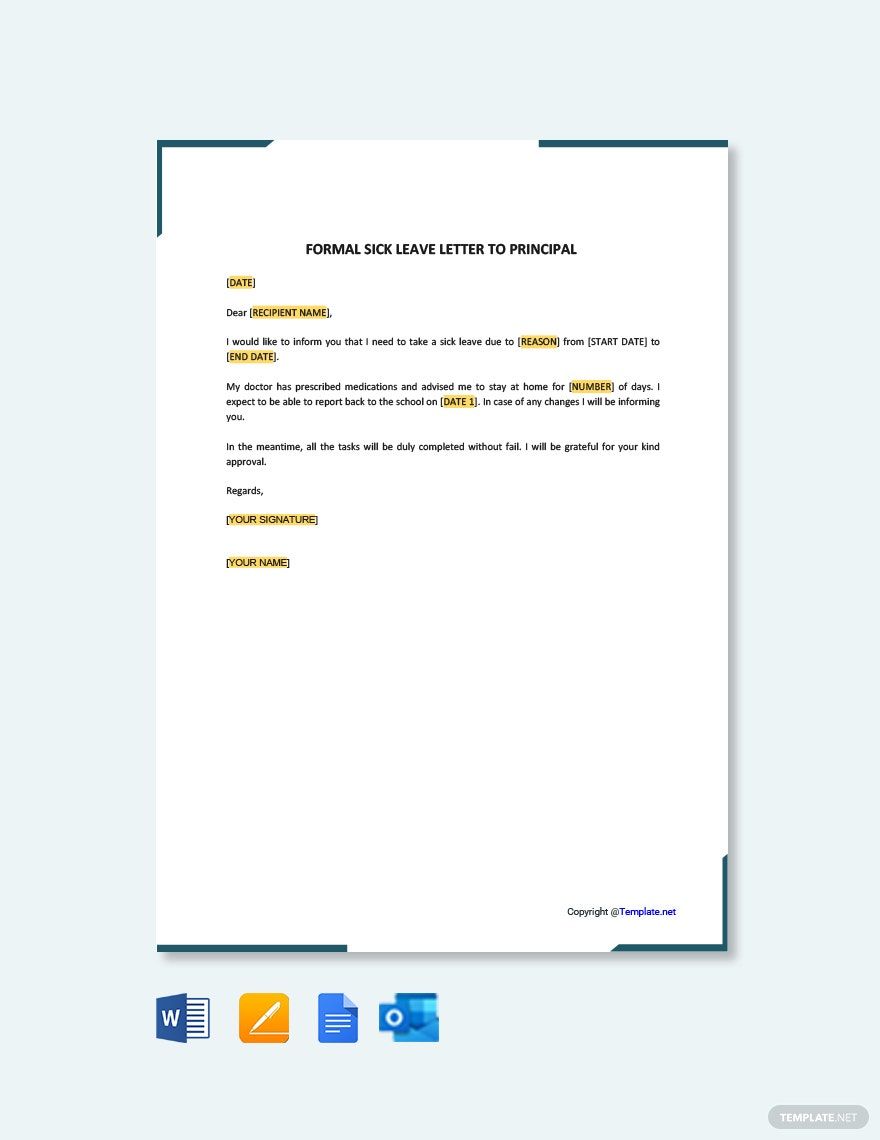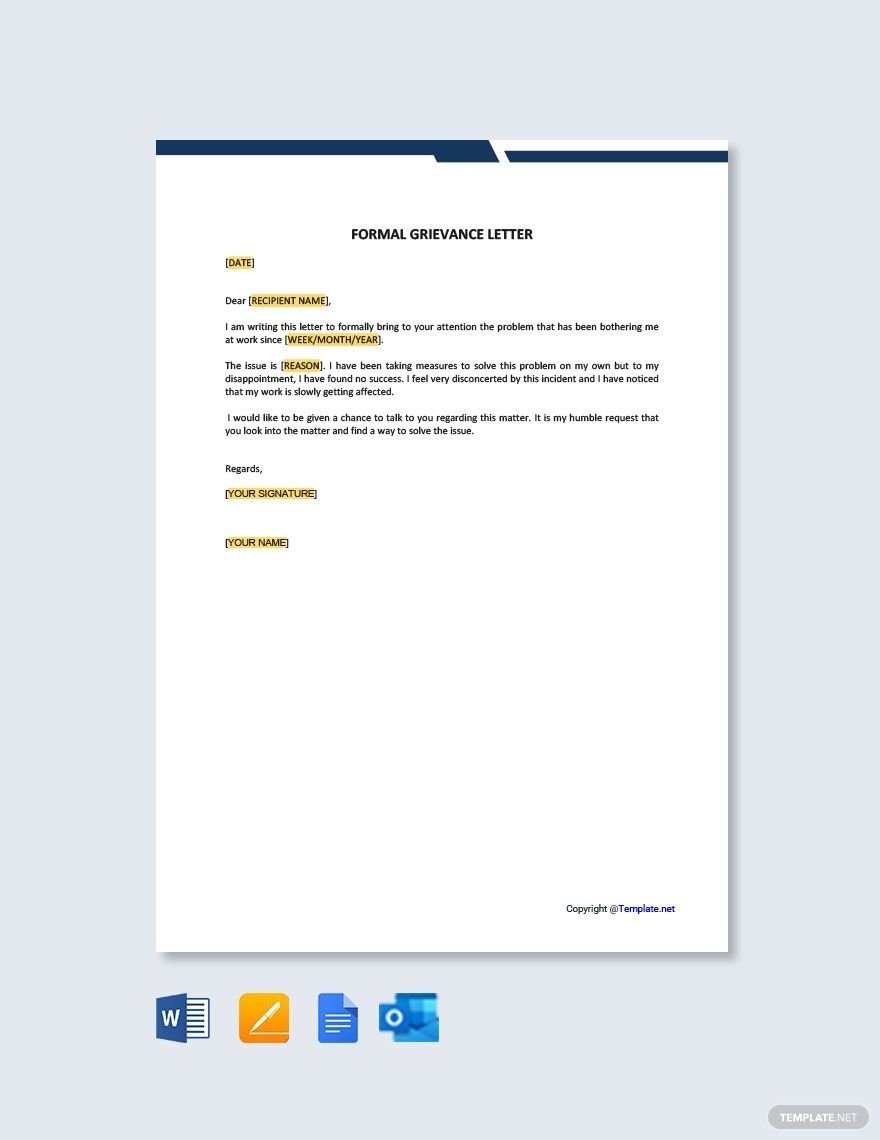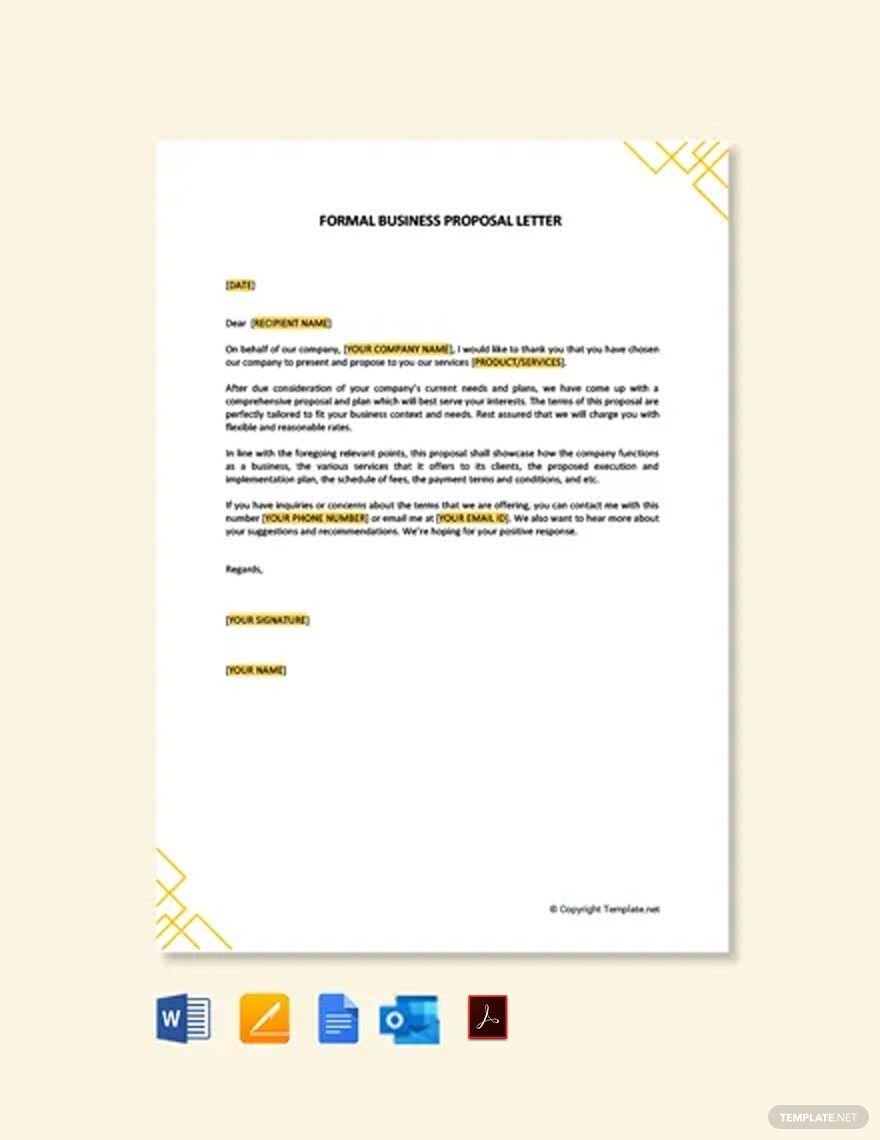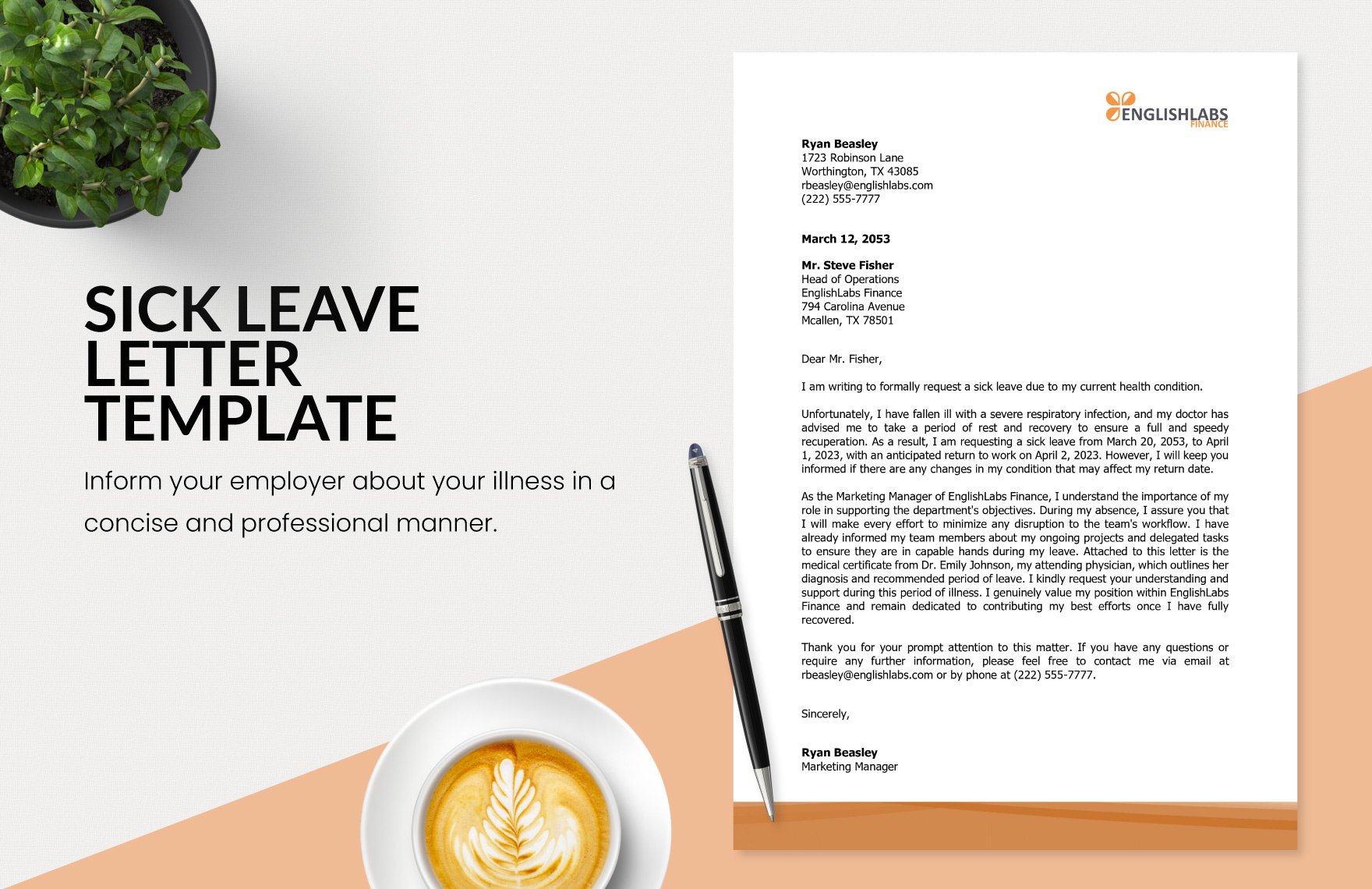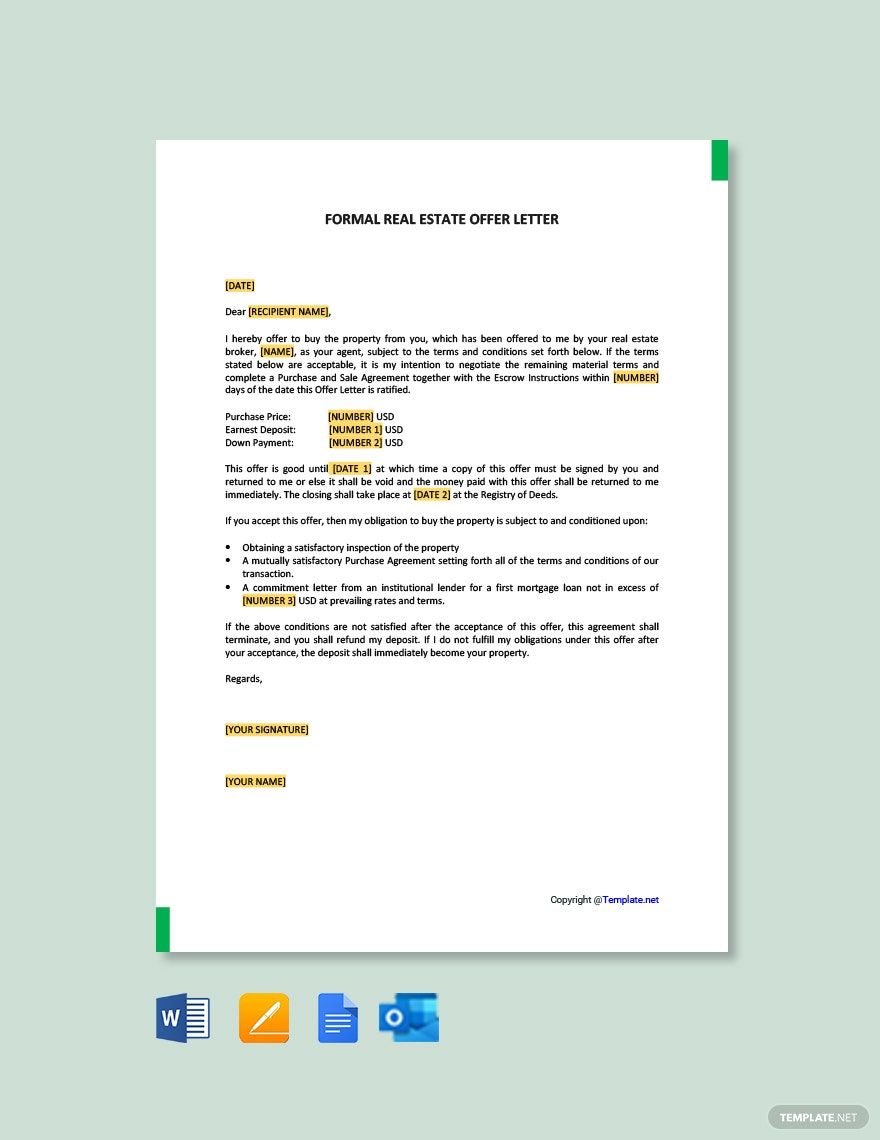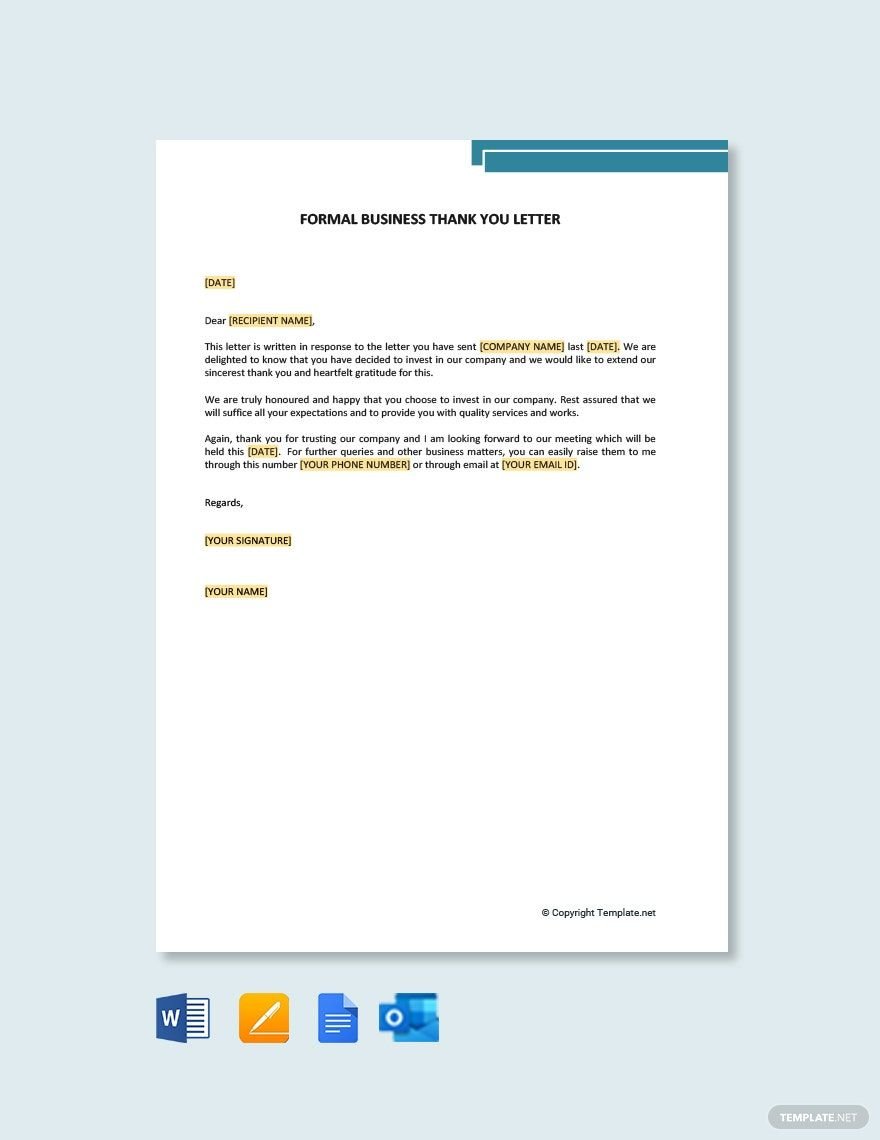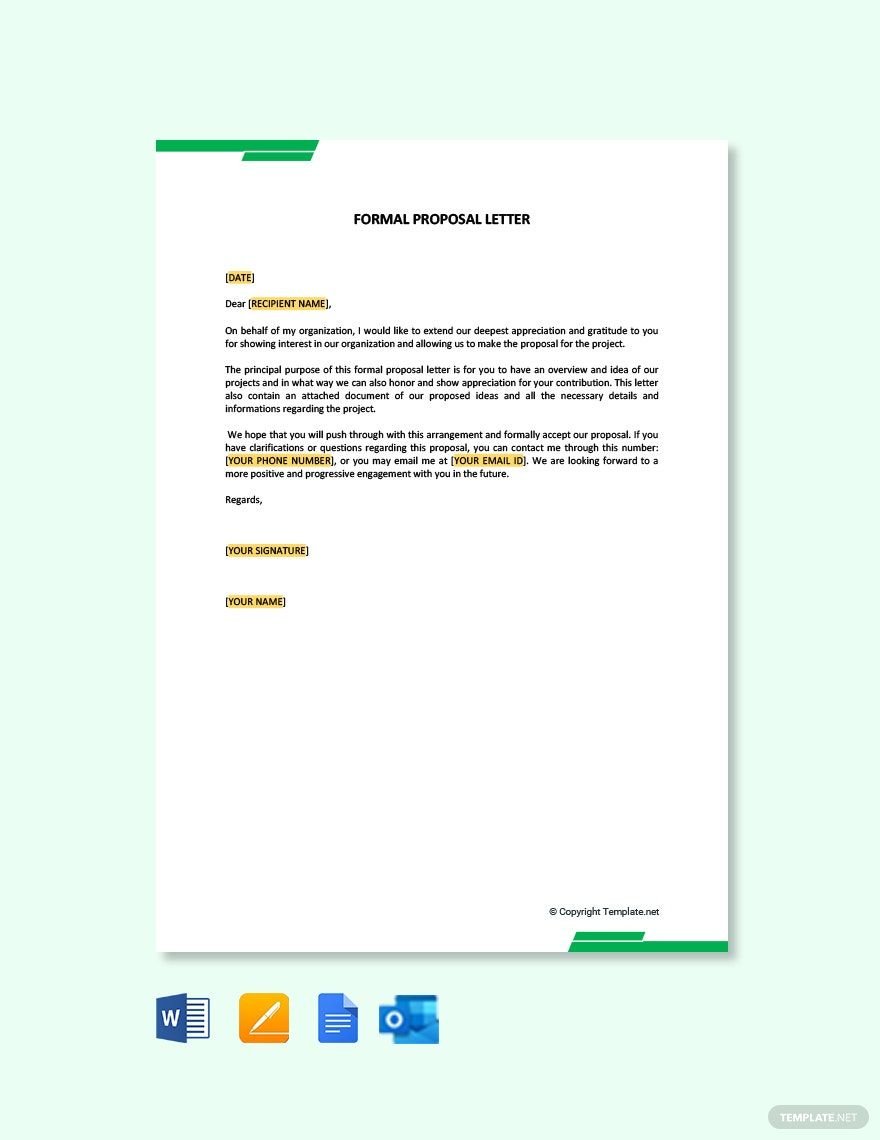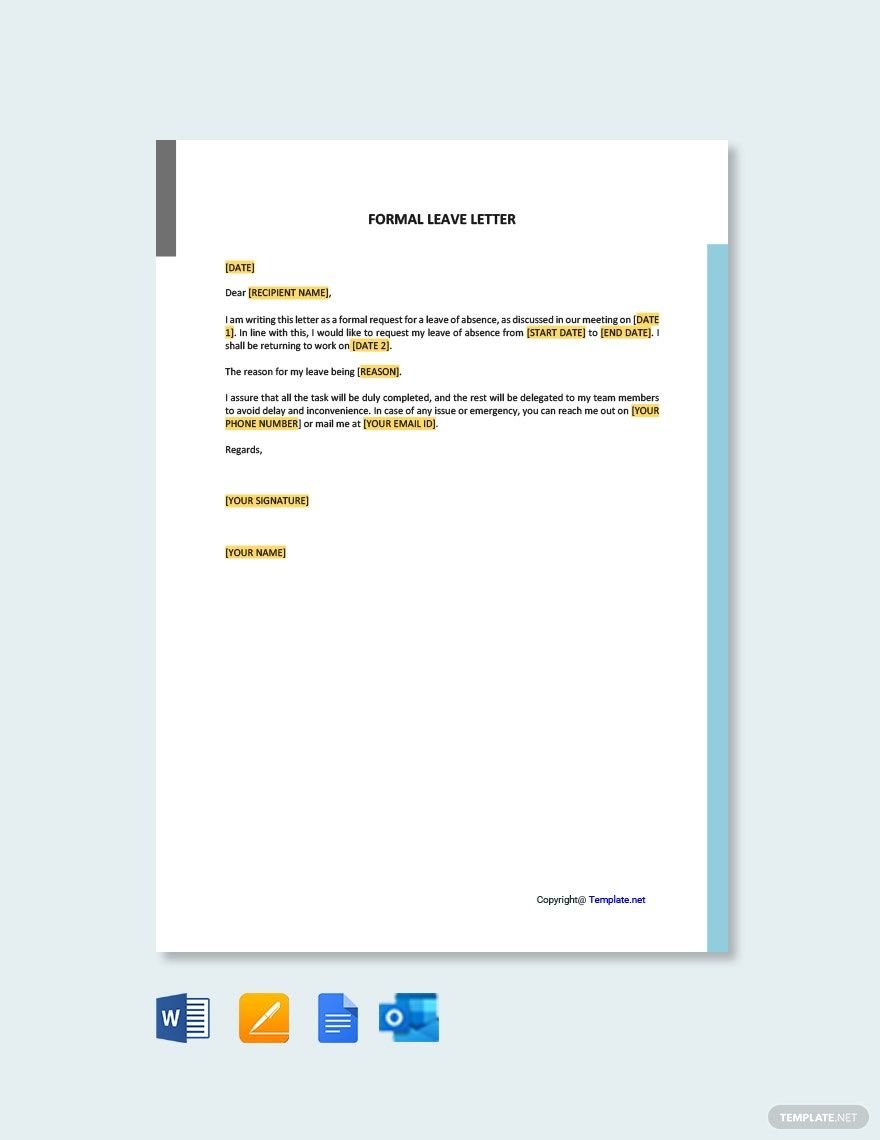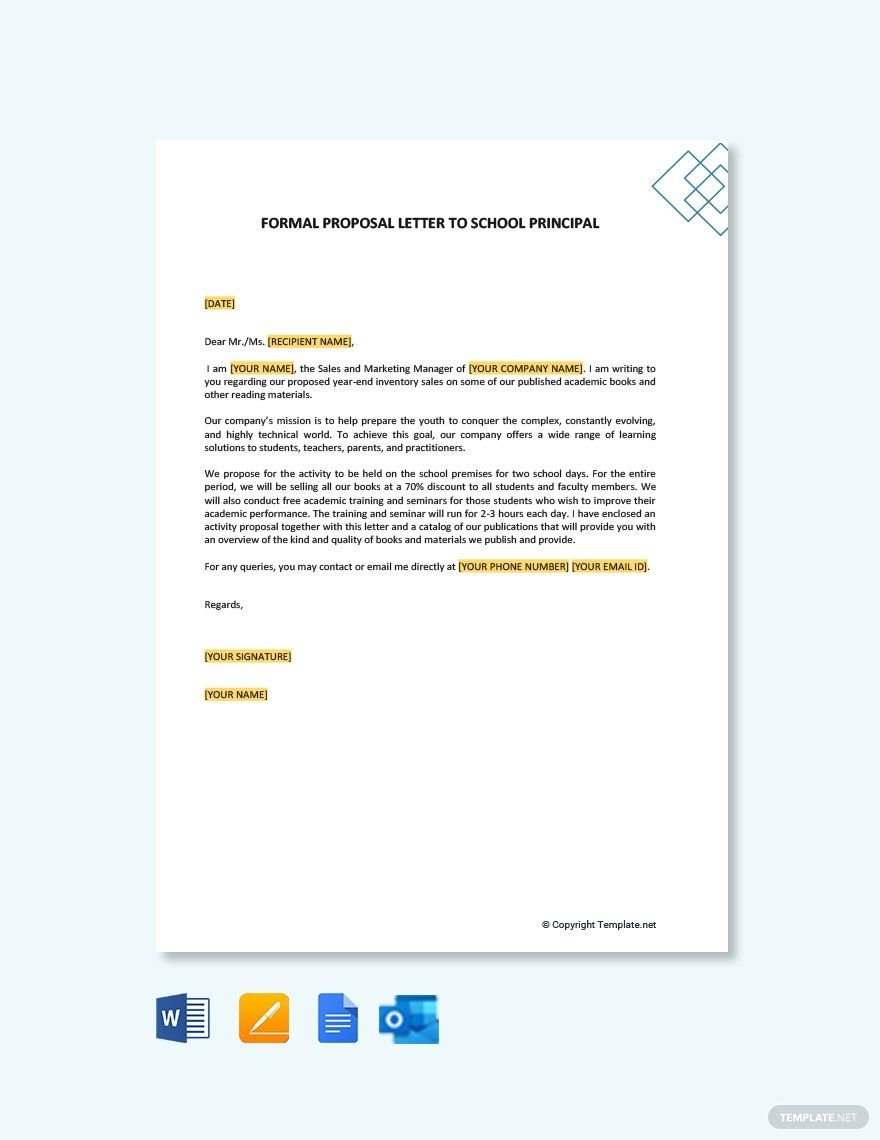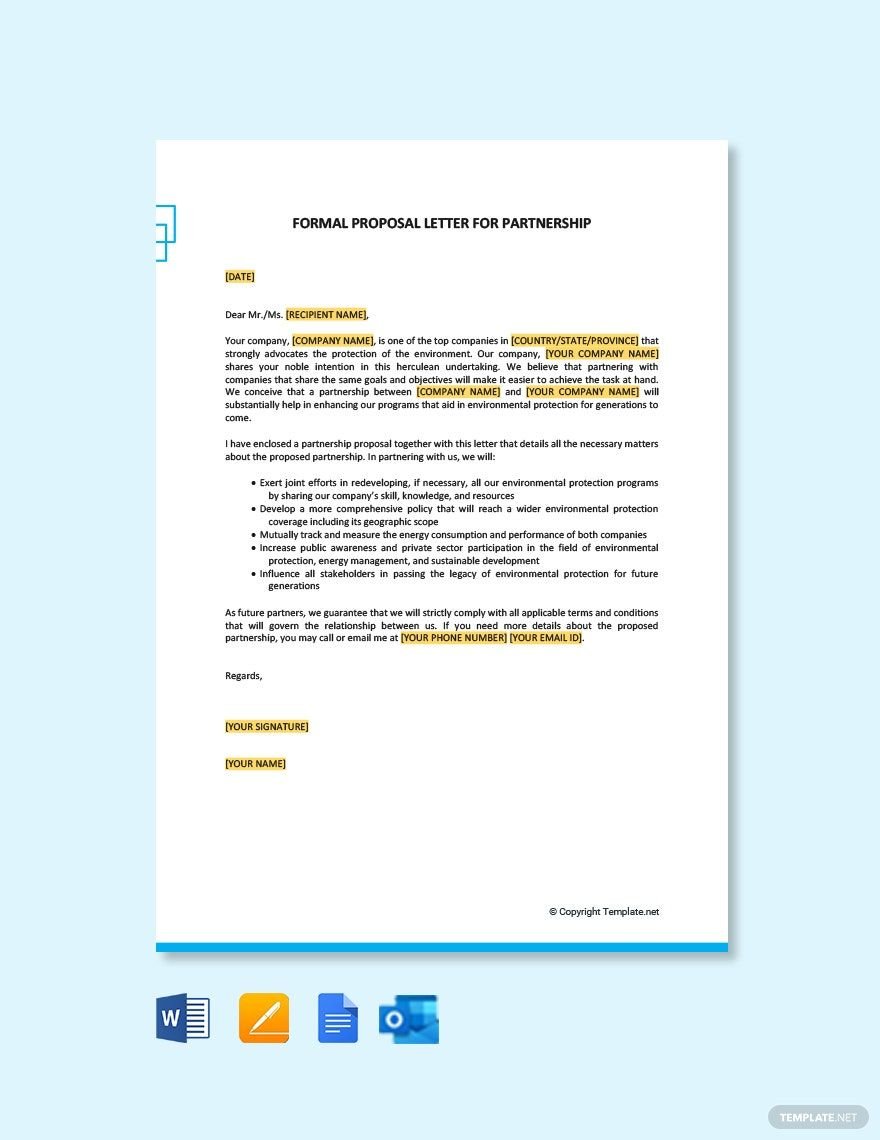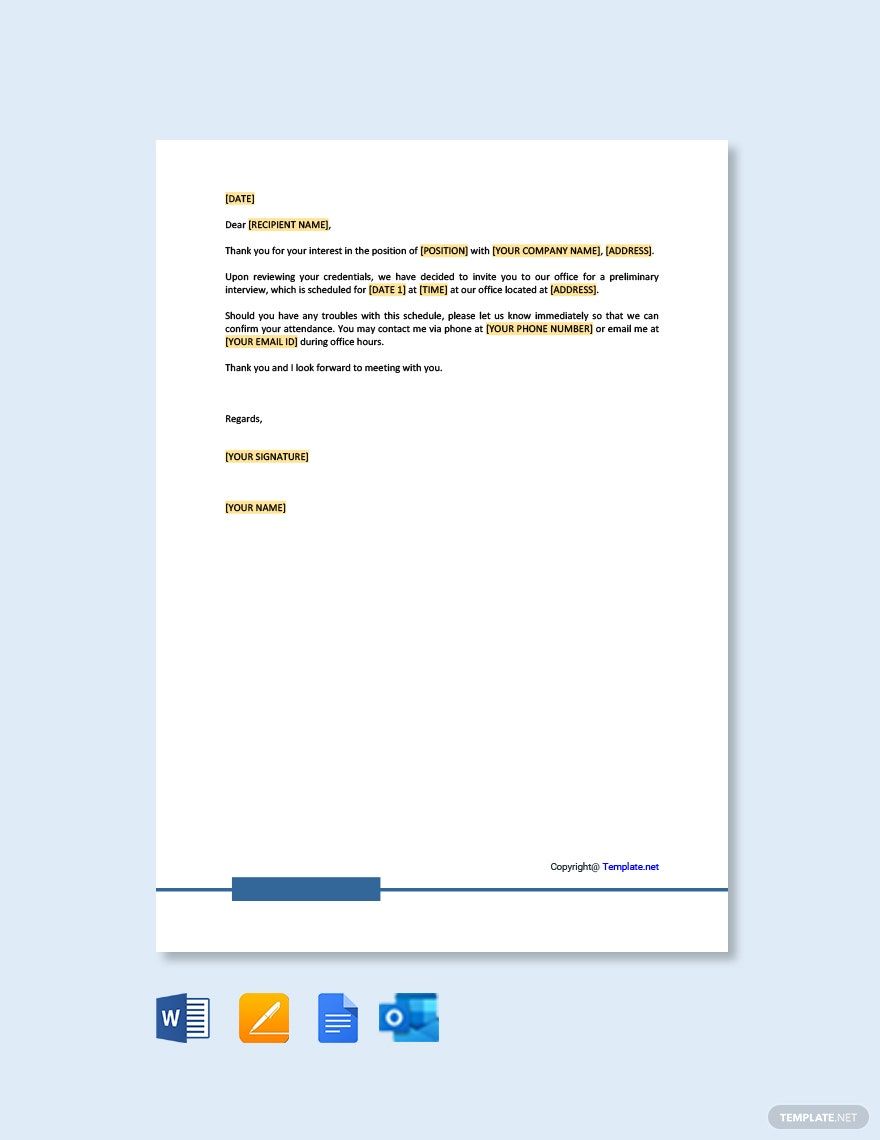Whether you own a small-scale business or a large corporation, you are bound to write letters for legal and professional purposes. You may be required to write request letters to your principal clients or complaint letters to your supplier. Either way, it is evident that letters, whether printed or electronic, are essential for businesses. With that, if you want your business to prosper, you need to have our comprehensive, professionally written and industry compliant Formal Letter Template in Microsoft Outlook. This file has everything that you need: original suggestive content plus editable and customizable in any devices. Make formal letter writing easier with our template!
Formal Letter Templates in Outlook
Elevate Your Communication with Professional Formal Letter Templates in Microsoft Outlook by Template.net
Transform your correspondence effortlessly with pre-designed Formal Letter Templates that bring professionalism and elegance to every message you send. Whether you're a business professional aiming to impress or someone who simply wants to add a touch of class to their letters, Template.net offers a solution that doesn’t require any design skills -- just pick and choose from beautiful pre-designed options. With these templates, you can create standout letters to promote an event or showcase product features all while maintaining a polished appearance. Enjoy the convenience of free pre-designed templates that are available for downloadable and printable files in Microsoft Outlook, ensuring your letters are ready to both send digitally and hand out physically. Enjoy significant time and cost savings while maintaining absolute ease of use, thanks to our user-friendly formats that ensure you don’t need design expertise to produce stunning letters effortlessly.
Explore more exquisite premium pre-designed templates in Microsoft Outlook, designed to keep your communications fresh and engaging. Our library is regularly updated to provide you with a rich selection of both Free and Premium options that allow you to customize letters for any occasion or audience. Every template is easily downloadable and ready to share, either by exporting them to print or distributing them via email for broader reach. Leverage the flexibility of both Free and Premium templates to maximize the impact of your correspondence. The simplicity of getting started ensures that elevating your communication style is just a few clicks away.
Frequently Asked Questions
What are the 7Cs of writing a formal letter?
1. Clear
2. Concise
3. Correct
4. Courteous
5. Conversational
6. Convincing
7. Complete
What are the main features of a formal letter?
A formal letter consists of the following:
1. Heading
2. Inside Address
3. Greeting
4. Body
5. Complimentary Close
6. Signature Line
What are the general types of letters?
Although there are various types of letters, the most common types are inquiry letters and information letters. Inquiry letters are written to formally ask the letter’s audience about something, such as requests, permissions, and more. Information letters are letters that provides you something, like notice, proposals, and more.
How do you identify formal letters from informal letters?
There are factors from informal letters that are different from formal letters. One factor is that an informal letter starts with a dear + the recipient’s name and ends with Best Wishes + the sender’s name, while a formal letter starts with a salutation and ends with Yours truly, + sender’s full name.
